Course Offerings by Semester
For the most accurate listings, including modes of instruction please visit BuckeyeLink or Classes.osu.edu.
Spring 2024 Course Offerings
History of Art 2001 - History of Western Art I: Ancient and Medieval Worlds
Professor Karl Whittington
Class # 20188 (+ Recitation) | IN PERSON
Lecture: MON & WED 9:10-10:05AM | Recitation: THUR or FRI 9:10-10:05AM
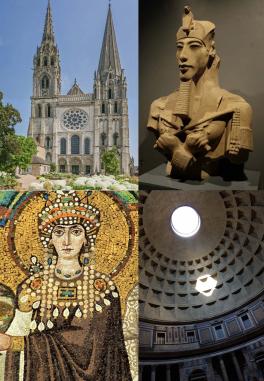
This course examines the history of Western Art (architecture, painting and sculpture) from the third millennium BCE through the fifteenth century CE. Rather than a complete “survey” of that period, the course will concentrate its attention on a select group of representative monuments. We will examine not only the monuments themselves, but also the historical context in which they were produced in order to explore their purpose and the way that they functioned.
There will be a strong emphasis on visual analysis and understanding how visual forms convey meaning and relate to the viewer. Our goal is to impart not only a body of knowledge but also a set of critical tools, which you should be able to apply to even material not specifically covered in this course.
GEN Foundations: Literary, Visual and Performing Arts (LVPA) and Historical and Cultural studies
GEL: Visual/Performing Arts (VPA), Historical Study, Diversity: Global Studie
History of Art 2001 - ONLINE - History of Western Art I: Ancient and Medieval Worlds
Professor Karl Whittington
Class #27249 | ONLINE | Fully Asynchronous
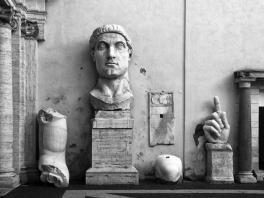
This course examines the history of Western Art (architecture, painting and sculpture) from the third millennium BCE through the fifteenth century CE. Rather than a complete “survey” of that period, the course will concentrate its attention on a select group of representative monuments. We will examine not only the monuments themselves, but also the historical context in which they were produced in order to explore their purpose and the way that they functioned. There will be a strong emphasis on visual analysis and understanding how visual forms convey meaning and relate to the viewer. Our goal is to impart not only a body of knowledge but also a set of critical tools, which you should be able to apply to even material not specifically covered in this course.
GEN Foundations: Literary, Visual and Performing Arts (LVPA) and Historical and Cultural studies
GEL: Visual/Performing Arts (VPA), Historical Study, Diversity: Global Studies
History of Art 2002 Honors - History of Western Art II: Europe and the United States, Renaissance to Modern
Professor Andrew Shelton
Class # 29909 | IN PERSON | MON & WED 5:30 – 6:50 PM
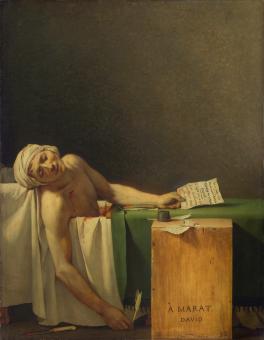
This course examines the art of Europe and the United States from about 1400 to the present, with an emphasis on developments in painting. Rather than a traditional survey of that period, the course will concentrate on a select group of representative works that shaped—and were shaped by — Western social, political, economic, and intellectual history. There will be a strong emphasis, too, on questions of analysis and interpretation — including, in some cases, the changing history of the artworks’ reception. The goal will be to impart not only a body of knowledge but also a set of critical tools, including visual literacy, that students will be able to apply to a wide range of material not specifically covered in the course.
GEN Foundations: Literary, Visual and Performing Arts (LVPA) and Historical and Cultural studies
History of Art 2002 ONLINE - History of Western Art II: Europe and the United States, Renaissance to Modern
Professor Jody Patterson
Class #20192 | ONLINE | Fully Asynchronous
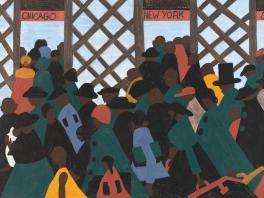
This course examines the art of Europe and the United States from about 1400 to the present, with an emphasis on developments in painting. Rather than a traditional survey of that period, the course will concentrate on a select group of representative works that shaped—and were shaped by — Western social, political, economic, and intellectual history. There will be a strong emphasis, too, on questions of analysis and interpretation — including, in some cases, the changing history of the artworks’ reception. The goal will be to impart not only a body of knowledge but also a set of critical tools, including visual literacy, that students will be able to apply to a wide range of material not specifically covered in the course.
GEN Foundations: Literary, Visual and Performing Arts (LVPA) and Historical and Cultural studies
GEL: Visual/Performing Arts (VPA), Historical Study, Diversity: Global Studies
History of Art 2003 - The Art and Visual Culture of East Asia
Professor Christina Mathison
Class #20193 (+ Recitation) | IN PERSON
Lecture: MON & WED 11:30 – 12:25 PM | Recitation: THUR or FRI 11:30 – 12:25 PM
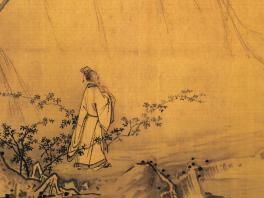
This course offers an introduction to the visual arts in East Asia, from the Neolithic through today. The course examines in particular the relationship between cultural production and changing notions of authority in East Asia in a comparative historical perspective. Case studies will be drawn from China, Korea, Japan, and neighboring regions. Issues examined include: religion and early state formation; courtly culture and monumentality; the development of urban popular culture; the age of empire; art and modernization.
GEN Foundations: Literary, Visual and Performing Arts (LVPA) and Historical and Cultural studies
GEL: Visual/Performing Arts (VPA), Historical Study, Diversity: Global Studies
History of Art 2003 Honors - The Art and Visual Culture of East Asia
Professor Christina Mathison
Class #29903 | IN PERSON | TUE & THUR 11:10AM-12:30PM
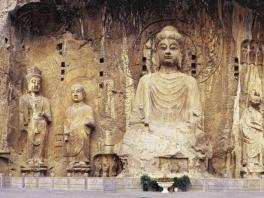
This honors course is a thematic introduction to the major artistic and cultural trends of East Asia. We will study major developments and issues in the arts of China, Japan, and Korea, discussing both cross-cultural artistic flows and the many cultural and artistic differences between cultures in the region. Major monuments of East Asian art and architecture will serve as our primary evidence for explorations of the culture, religions, and history of the region.
GEN Foundations: Literary, Visual and Performing Arts (LVPA) and Historical and Cultural studies
GEL: Visual/Performing Arts (VPA), Historical Study, Diversity: Global Studies
History of Art 2005: Latin American Art: Prehispanic and Early Modern
Professor Carlos Rivas
Class #35083 | IN PERSON | MON & WED 3:55 – 5:15 PM
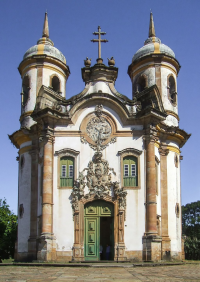
This course will examine the art, architecture, and material culture of Latin America from about 2000 BCE to 1821 CE. After closely surveying prominent Pre-Columbian civilizations in Mesoamerica, the Andes, and ancient Amazonia, we will move on to the era of Spanish and Portuguese colonial rule from first encounters in 1492 to the wars of independence in the early nineteenth century. A wide range of objects and images will be discussed, from painting, sculpture, architecture, ceramics, textiles, featherwork, and the decorative arts. Special attention will be paid to the social use of art in the transformation of religious and spiritual practices.
GEN Foundations: Literary, Visual and Performing Arts (LVPA) and Historical and Cultural studies
GEL: Visual/Performing Arts (VPA), Historical Study
History of Art 2301: Classical Archaeology
Professor Mark Fullerton
Class #35296 | ONLINE | ASYNCHRONOUS
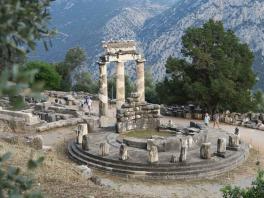
This course is concerned with the study of the Classical past through its material remains, especially, works of art – architecture, sculpture and painting. Indeed, the study of ancient Greek and Roman art has for centuries been embedded within the field of Classical Archaeology, for reasons that we will closely consider.
The term “Classical” here refers to the Greek and Roman cultures of the Mediterranean world beginning with the palace civilizations of the Aegean Bronze Age and extending through the third century of the Roman Empire (c.2000 BCE-3000 CE). The objective of the course is to familiarize the student with works of art from ancient Greece and Rome, as well as the major archaeological discoveries and controversies of the past two centuries. The selection of sites and monuments is not comprehensive but is intended to showcase important developments within the field, especially in cases where archaeology has provided evidence that challenges preconceived notions of Greek and Roman culture.
This fully online course will be delivered entirely through Ohio State University’s learning management system, Carmen/Canvas.
GEN Foundations: Historical and Cultural studies
GEL: Cultures and Ideas, Historical Study, Diversity: Global Studies
History of Art 2901 ONLINE: Intro to World Cinema
Instructor: TBA
Class #27250 | ONLINE | Fully Asynchronous
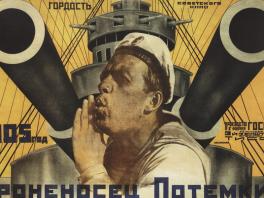
This course will introduce students to the history of film as an artistic medium and a global art form. We will track technological, aesthetic, and formal developments in its evolution from photographic and proto-cinematic technologies to digital cinema (roughly 1827-2001) by studying particular masterpieces, and focusing on the role of the director or auteur. We will pay close attention to the medium’s complex relationship to time, its changing materiality (and “medium specificity”), and its fraught relationship to truth and reality. Students will engage in a historical and formal study of international cinema through a chronological survey of its major forms, techniques, and its relationship to the broader history of art, as well as social and political history. We will sample its major and “minor” forms, from Hollywood productions to art gallery experiments and cinema from the developing world. Students will be introduced to the grammar of film through a historical account of its formal evolution and the stylistic analysis of the visual and narrative structures of individual films.
GEN Foundations: Literary, Visual and Performing Arts
GEL: Visual/Performing Arts (VPA), Diversity: Global Studies
History of Art 3010 - Gender and Sexuality in European Art
Instructor: Maggie Wilson & Emilela Thomas-Adams
Class #29850 | IN PERSON | WED & FRI 2:20- 3:40PM
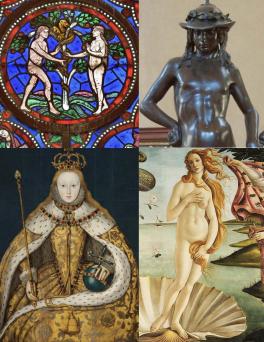
This course offers an introduction to the intersectional study of European Art, exploring the intertwining ideologies of gender, sexuality, race, and ethnicity from the Ancient Mediterranean World to the present. We will see that the ways artworks impact and construct ideas and stereotypes about gender, race, and sexuality in the modern world are deeply influenced by their development in premodern history. Topics to be explored include the ways in which ideas about gender roles and identities are shaped by artworks; the gendered contexts of artistic production; gendered practices of viewing works of art; the changing status of female and non-white artists and patrons in Europe; the way people of color were depicted in premodern European art; and queer and transgender artists and artworks. We will investigate the ways in which works of art enforced particular codes of behavior for people of different genders and races, but also how works of art served as sites of resistance to such roles and stereotypes, and as a place where individual identities were negotiated and portrayed. We will explore both famous works of European art and also lesser-known paintings, sculptures, buildings, and objects of visual culture.
GEN Foundations: Literary, Visual and Performing Arts (LVPA) and Race, Ethnicity and Gender Diversity (REGD)
GEL: Visual/Performing Arts (VPA)
History of Art 3010 - Gender and Sexuality in European Art
Professor Karl Whittington
Class #35084 | ONLINE | ASYNCHRONOUS

This course offers an introduction to the intersectional study of European Art, exploring the intertwining ideologies of gender, sexuality, race, and ethnicity from the Ancient Mediterranean World to the present. We will see that the ways artworks impact and construct ideas and stereotypes about gender, race, and sexuality in the modern world are deeply influenced by their development in premodern history. Topics to be explored include the ways in which ideas about gender roles and identities are shaped by artworks; the gendered contexts of artistic production; gendered practices of viewing works of art; the changing status of female and non-white artists and patrons in Europe; the way people of color were depicted in premodern European art; and queer and transgender artists and artworks. We will investigate the ways in which works of art enforced particular codes of behavior for people of different genders and races, but also how works of art served as sites of resistance to such roles and stereotypes, and as a place where individual identities were negotiated and portrayed. We will explore both famous works of European art and also lesser-known paintings, sculptures, buildings, and objects of visual culture.
GEN Foundations: Literary, Visual and Performing Arts (LVPA) and Race, Ethnicity and Gender Diversity (REGD)
GEL: Visual/Performing Arts (VPA)
History of Art 3521 – Renaissance Art
Lecturer Kristen Adams
Class #28960| IN PERSON | MON & WED 3:55 – 5:15 PM
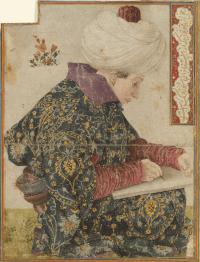
This course offers a panoramic introduction to the greatest artists and masterpieces of the Italian Renaissance from its beginnings in Florence through its triumph in Rome and Venice. After setting the stage with a brief overview of the art of the Late Gothic period in Italy, lectures will trace the revolutionary changes and global interests that transformed painting, sculpture, and the decorative arts in the 15th and 16th centuries. Special consideration will be given to the intersection of art and technology. Students will experience the Sistine Chapel and additional spaces in Virtual Reality and will examine how other modern technologies, when applied to Renaissance craft, bring new insight to this remarkable period in art history.
GEN Foundations: Literary, Visual and Performing Arts (LVPA)
GEL: Visual/Performing Arts (VPA), Diversity: Global Studies
History of Art 3901 - World Cinema Today
Senior Lecturer Mark Svede
Class #20195 | IN PERSON | TUE & THUR 5:30-6:50PM
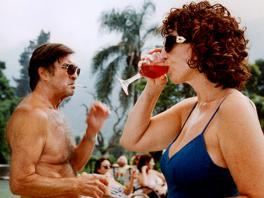
This course will survey the best of world cinema within the past decade or two, including representative examples of national cinemas, such as (potentially, since the selections would change) Iranian, Chinese, Taiwanese, and Indian; ethnic cinemas, such as (potentially) Kurdish, Jewish diaspora, and Quebecois; regional cinemas, such as (potentially) Eastern European and Middle Eastern cinemas; continental cinemas, such as African and South American; global cinema, such as Euro-American, Hong Kong, and Dogme 95; and the cinemas of civilizations, such as Islamic, Judeo-Christian, and Confucian. Not all these categories, or others that are possible, are represented in any given quarter.
GEN Foundations: Literary, Visual and Performing Arts (LVPA) and Race, Ethnicity and Gender Diversity (REGD)
GEL: Visual/Performing Arts (VPA), Diversity: Global Studies
History of Art 3905: The Developing World on Screen
Professors Erica Levin & Max Woodworth
Class #35086 | IN PERSON | Tues & Thurs 2:20 – 4:10 PM | 4 credits

This is a co-taught intensive in-person course in Film Studies and Development Studies (4 credits) that explores relationships between the lived environments of the so-called “developing world” and their representations on film. In this course, which is designed to satisfy the requirements of the General Education “Lived Environments” theme, students will view narrative and documentary films from around the world and engage the stories they tell by way of readings on global poverty, inequality, environmental degradation, among other themes. This course engages a diverse range of approaches to studying the developing world, focusing on the production of knowledge and structures of perception that shape relations between social groups at different spatial scales and that have sustained a notion of the world as containing developed and developing regions.
Cross-listed in International Studies.
GEN Themes: Lived Environments
History of Art 4010: An Introduction to the Methods and Theories of Art History
Professor Ujaan Ghosh
Class #20196 | IN PERSON | TUE & THUR 11:10 AM – 12:30 PM

The Course is intended for Art History Majors and other interested students to get acquainted with the fundamental theories and methods of art historical writing. Throughout the course, we will closely read some of the foundational texts that have influenced art historical writing over the past few centuries. We will look at how global movements— aesthetic, political, and sociological have shaped the ways in which historians have approached writings on art. At the same time, the course will attempt to decenter the overabundant theoretical gaze on European thought that dominates art historical methodology. At the end of this course, students should be able to engage with the multiple modalities of art historical thought and become more aware of the kind of art historian they want to become in the future.
History of Art 4030- Museum Studies Seminar: Political Film in the Art Museum
Instructor Dareen Hussein
Class #35087 | IN PERSON | WED & FRI 2:20 – 3:40 PM
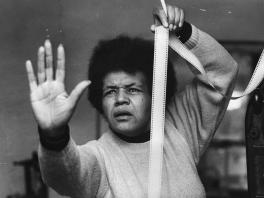
In this course, we will focus on the French filmmaker Sarah Maldoror (1929-2020) and her expansive connections to various art forms, including cinema, the visual arts, music, theater, literature, and poetry. We will engage several influential aesthetic and political movements, such as Militant Cinema (also known as 'Third Cinema'), Négritude, Pan-Africanism, Tricontinentalism, Surrealism, and more. We will approach this material through an in-depth study of the exhibition Sarah Maldoror: Tricontinental Cinema, which will be presented at the Wexner Center for the Arts in Spring 2024. Initially presented at the Palais de Tokyo in Paris, this exhibition offers the first of many engagements with the life and legacy of Maldoror, the first woman to shoot a film on the African continent.
Maldoror perceived cinema as a powerful tool in the fight against racism and the decolonization of African cultures. As a filmmaker, she actively participated in the liberation movements of the Portuguese colonies (Angola, Cape Verde, and Guinea-Bissau), built deep connections with poets and intellectuals from the Francophone Caribbean (Aimé Césaire, Léon G. Damas, Réne Depestre, Édouard Glissant), while also spotlighting the creative contributions of Afro-Caribbean artists and musicians (Toto Bissainthe, Wifredo Lam). Our exploration will be guided by the exhibition; we will consider the role of institution (the art museum) in commemorating filmmakers like Maldoror and the curatorial choices that shape the exhibition itself.
History of Art 4411: Early Christian and Byzantine Art
Professor Ravi Binning
Class #35088 | IN PERSON | MON & WED 12:45 – 2:05 PM
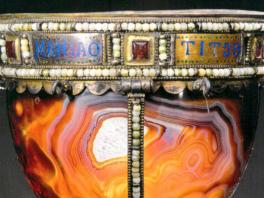
This course introduces the exciting and mysterious art and architecture of the medieval Mediterranean world. It moves from the earliest and secret Christian paintings of subterranean Rome to the eclectic arts of Byzantium from Istanbul and Venice to Egypt and Georgia. We will explore the intimate connection between art and its environments, whether on holy mountains or in remote caves and deserts, and we will confront images and objects once believed to possess the power of legendary figures and the magical properties of rare materials. Additionally, the course will introduce major monuments in relation to the phenomena of medieval pilgrimage, ritual, healing, and authority.
History of Art 4550: 18th Century European Art
Professor Andrew Shelton
Class #35089 | IN PERSON | TUES & THUR 5:30 – 6:50PM
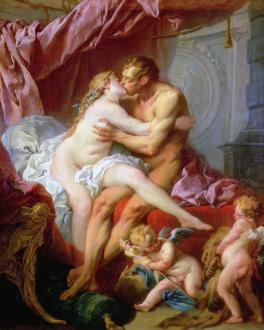
This course explores the art of 18th-century Europe, with an emphasis on developments in painting in the artistic centers of Venice, Paris, London, and Rome. Artists whose careers will be studied in detail include Giovanni Battista Piazzetta and Giovanni Battista Tiepolo in Venice; Antoine Watteau, François Boucher, Jean-Baptiste-Siméon Chardin, and Jean-Honoré Fragonard in Paris; and William Hogarth, Thomas Gainsborough, and Sir Joshua Reynolds in London. The last weeks of the course will be devoted to charting the emergence of Neoclassicism in Rome and its subsequent spread throughout the continent in the years leading up to the French Revolution.
History of Art 4810 – The Arts of China
Professor Christina Mathison
Class #35092 | IN PERSON | TUE & THUR 2:20 – 3:40PM
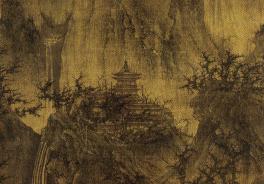
The distinct and influential visual culture of China reflects the dynamic periods in China’s history. This course examines the art and history of China thematically and chronologically exploring the culture’s artistic practice in religious, ritual, political, and courtly contexts. Beginning with early pottery-making and jade-carving cultures and proceeding into the twenty-first century, students will analyze the main artistic trends over time and wrestle with the related issues of power, authenticity, and politics.
GEN Foundations: Literary, Visual and Performing Arts (LVPA)
GEL: Visual/Performing Arts (VPA), Diversity: Global Studies
History of Art 5001: Leonardo da Vinci: Artist, Scientist, Engineer
Professor Christian Kleinbub
UG # 35294 G #35293 | SYNCHRONOUS ZOOM SESSIONS | TUE & THUR 12:45 - 2:05PM

The quintessential “Renaissance man,” Leonardo da Vinci has come to represent the very idea of genius, and no artist or scientist is more famous in our own times. What is more, his painting, the Mona Lisa, is undoubtedly the best-known image ever made. So familiar are Leonardo’s paintings and drawings, however, that we tend to neglect them, glancing them over like known quantities. What this course will attempt to do is make these images strange again. For Leonardo was hardly the person we so often make him out to be. Among other things, we will learn how art, science, and engineering were once for Leonardo and many of his contemporaries one and the same profession. By considering the most important of Leonardo’s very rare paintings as individual R&D projects, this course will attempt to burrow deeper into not only what made Leonardo special but also what was, in fact, characteristic of the age. The results will show the Italian Renaissance past as a still largely unknown and unexamined country.
History of Art 5562: Art and History in Early Modern Latin America, 1492-1820
Professor Carlos Rivas
Class #36581 UG; #36582 G | IN PERSON | TUE & THUR 9:35 – 10:55 AM
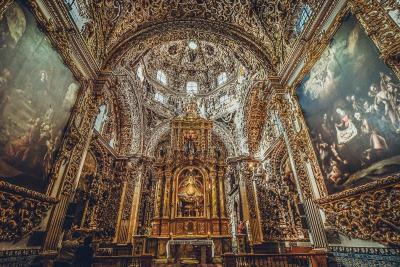
How did three centuries of European colonialism shape visual and material culture in Latin America, and how is this period still relevant today? This course explores the art and architecture of early modern Latin America (1492-1820) through in-depth examination of a wide range of art historical subjects — from urban planning to featherworks to biombos and to paintings on canvas — interpreted from a range of disciplinary (art history, anthropology, ethnic studies) and theoretical perspectives (critical race theory, decolonial methodologies, and critical indigeneity).
History of Art 5905 - Avant-Garde Cinema
Professor Erica Levin
Class UG - #29852 | G - #29853 | IN PERSON | MON & WED 3:55 – 5:15PM
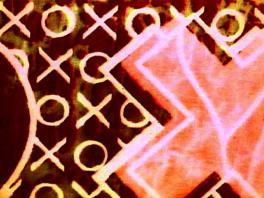
Many historically significant films identified as "visionary," "personal," "experimental," “political,” and "modernist” have been produced in surprisingly close proximity to the film industry. This course traces the complex and shifting relationship between what film historian David E. James designates as “major” (commercial, Hollywood) cinema and the “minor” cinemas of the avant-garde produced by artists, amateurs, agitators, and the like. Completed with limited financial resources, this work has often been distributed through alternative, self-organized channels of exhibition. Looking closely at narratives of stylistic evolution in avant-garde cinema, we will focus on points of contact between the history of art and cinema in both its major and minor modes. At the same time, we will remain attentive to questions that this approach risks leaving unanswered. How, for example, has the history of inventive, non-commercial cinema been shaped in unexpected ways by geography, (sub)culture, and politics? What kinds of communities and institutions have formed to support precarious modes of filmmaking in different moments and places? Where do the histories of individual filmmakers intersect with the often-conflicted social worlds their films address? With these questions in mind, we will look closely at a wide range of films made to surprise, unnerve, and provoke viewers since the early 1920s.
History of Art 8001 - The Asian Metropolis
Professor Ujaan Ghosh
Class #35292| IN PERSON | WED 2:15 – 5:00PM
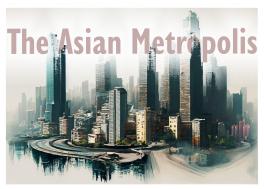
At least 1/8th of the world population resides in Asian Cities. What do these cities look like? How are these places inhabited, lived, experienced, and represented? The course will provide students with some of the conceptual foundations around urbanization in Asia. The temporal focus of the course will cover 1800 to the present day. We will look at key texts that discuss both formal components of urban planning, architecture, and built space but also the affective nature of urban life. Thus, not only will we examine the visions of specific architects and particular strands of building practices but also the experientiality of navigating these built spaces. Finally, a significant section of the course will look at representations of Asian Cities in films, literature, and newer multimedia practices such as video games. The goal of the course is to help students think critically about urbanity and its representational regimes in the Asian Context.
History of Art 8821: The Shape of the Field: Recent Work in Contemporary Japanese Art and Art History
Professor Namiko Kunimoto
Class # 28516 | IN PERSON | TUES 2:15 - 5:00PM
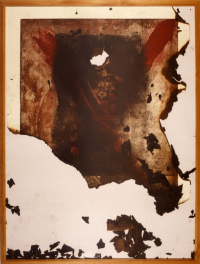
This advanced seminar will focus on critical themes of gender, race, and class in Japan, the burst of the economic bubble in the 1990s, the cult of cuteness, and the discursive relation between the global and the national. We will also consider how Imperialism continues to be negotiated in art and art history across the Transpacific. Our investigations will include painting, performance art, manga, assemblage, digital media, and illustration.
